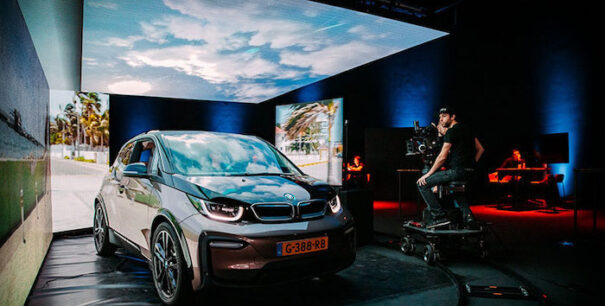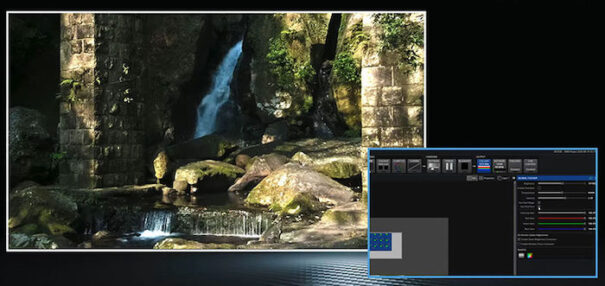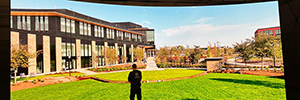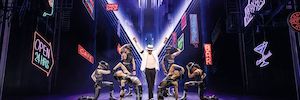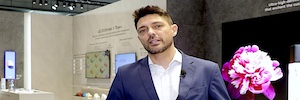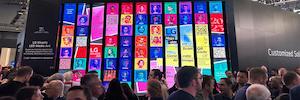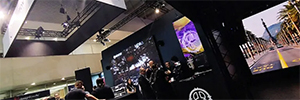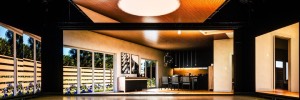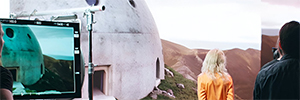Brompton Tessera v3.3 speeds up Led video processing
The new features that Brompton Technology has been introduced in the version 3.3 of its Tessera software optimize the performance of LED panels to streamline professional workflows.
Led video processors Tessera SX40 and S8 of Brompton Technology now feature a preset that supports the color space Aces AP1. In addition, collaboration with the virtual production provider Mo-Sys Add support for the camera tracking system StarTracker when using panels equipped with Tessera R2 or with the new receiving card Tessera R2+ and an SX40 or S8 processor with Frame Remapping.
Specifically, Tessera R2+ has the same SO-DIMM form factor as R2, which has set the standard for receiving cards for many years. In the case of R2+, which is compatible with all R2-based panel designs, provides additional data pins and ability to support new LED drivers.
Operating modes
Normally, when AEDs work with panel manufacturers to create their configuration, it is necessary to make certain trade-offs between the different aspects of visual performance. Finding faster refresh rates can mean reduced PWM bit depth, while increasing peak brightness can compromise low-light performance.
Although Led panel manufacturers try to find a good balance, There is currently only one 'one size fits all' setting that applies for the life of the panel
"This is a real challenge if LED panels need to be used in various scenarios that require prioritizing different aspects of visual performance, for example, if you need the highest brightness for a live event outdoors and the highest effective refresh rate to optimize performance with certain types of cameras in a studio. With Tessera's Operating Modes function 3.3 from now on, both scenarios can benefit from the best possible performance of the panel", Says Chris Deighton, Chief Technology Officer, Brompton.
The operating modes allow the same type of panel to offer different operations. Like this, Operating modes can prioritize different aspects of visual performance, as the maximum frame rate, Low Brightness Performance, the bit depth or effective refresh rate, among others.
Brompton engineers, in close cooperation with panel manufacturers, can create additional operating modes. Once activated, Users can instantly switch panels between operating modes via the processor, depending on the needs of each event or project.
PureTone Batch
Rental companies are well aware of the problems posed by combining different batches of LED panels. Despite being of the same type and calibrated with the same brightness, Color Temperature and Color Targets, often a new batch of LED panels looks noticeably different when displaying content.
This problem is usually due to differences in the nonlinearity of the different batches of LEDs or driver chips, a behavior that Brompton's PureTone function corrects, and that in the version 3.3 has been expanded so that each individual batch of panels is measured separately, generating a specific PureTone profile for that batch.
"With the new PureTone feature," explains Deighton, Our customers and panel manufacturers can correct the non-linearity of each batch of panels, ensuring neutral grayscales and accurate luminance performance in all operating modes".
Thanks to this function, "It's much easier to match different batches of Leds. PureTone is also very useful in film and television work, where the screens typically run at a much lower brightness to adjust to the exposures of the cameras, but it is still necessary to maintain neutral grayscales and accurate color reproduction", Adds.
ACEScg Support
As part of Brompton's commitment to streamlining professional workflows for virtual production, Tessera SX40 and S8 now feature a preset to support ACES AP1 primaries, used by the ACEScg color space, increasingly used, which avoids turning the color space into the source device.
ACES AP1 is automatically recognized by the processor via HDMI 2.0, or it can be manually selected on the processor. The user can also reference the ACES AP1 color gamut within Brompton's dynamic calibration tools.
"By supporting the ACEScg color space, we ensure that users working in that space can output it directly without unnecessary conversion of the color space," Deighton says. The fact that the font has to do this conversion can sometimes lead to a loss of precision or a cropping of colors. We wanted to simplify that process so that users who really care about color accuracy can streamline their workflow even more.".
Marker tracking
In collaboration with Mo-Sys, Brompton has added support for the StarTracker camera tracking system when using Tessera R2-based panels, along with Tessera SX40 or S8 Led processors and Frame Remapping.
"Accurate camera position tracking is critical for many virtual and xR production applications," Deighton said. Although there are many different systems to achieve this, A common approach has been the use of visible markers, which can be a challenge within an Led volume, which can now be solved by showing the appropriate markers on the Led itself".
Bookmarks overlay the displayed video content, and Tessera's frame remapping feature is used to display them only on output frames, that are not visible to the main camera, ensuring they never appear in the shot or reflections. Bookmarks are automatically generated, with the ability to configure its color and size from the processor's user interface.
You liked this article?
Subscribe to our Feed And you won't miss a thing.



